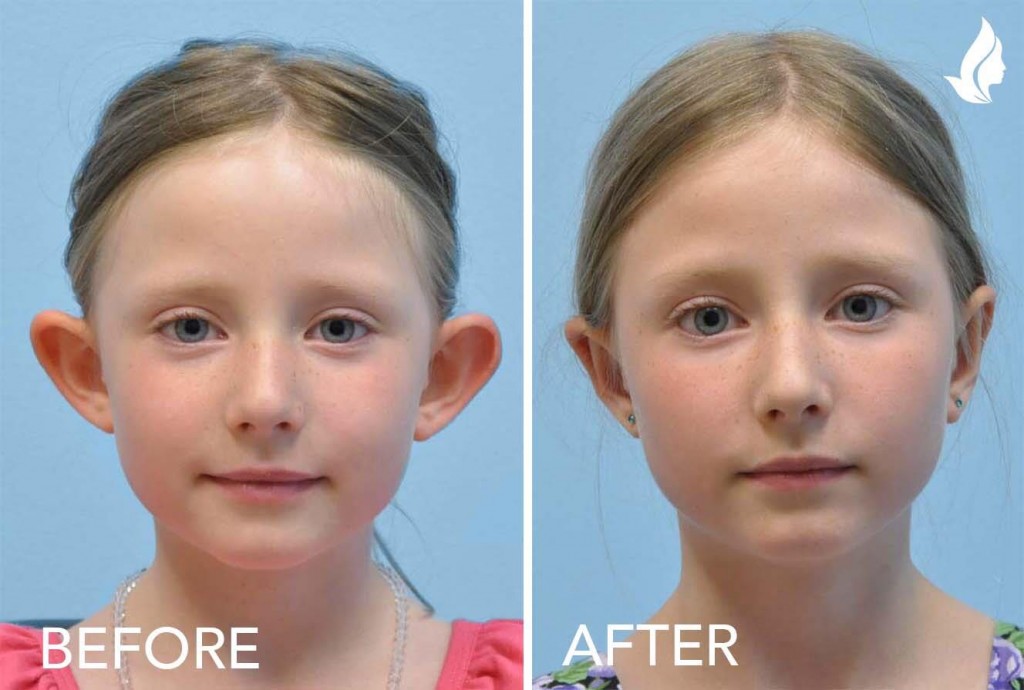*actual MWFP patient pictured
What you need to know about Otoplasty Ear Reconstruction
If you’re like most people, you take your ears for granted! In this case, we’re not talking about the function of the ear – hearing, but the actual appearance of your ears. About 5% of the American population is dissatisfied with how their ears look. This may be due to size, shape, or even how far from the head they protrude. As a result, many of these people experience a negative impact on their self-esteem and confidence, especially in their youth. Otoplasty, a surgical ear reconstruction procedure, is an incredible option for this population that is more accessible than many people think! Let’s take a closer look at what it is and how it can improve the quality of life of those who are unhappy with the appearance of their ears!
“As a child, my mother made me wear my hair long and parted down the middle to cover my ears,” shares Karissa, an Otoplasty patient of Midwest Facial Plastic Surgery. “I remember having to style my hair in a ponytail for gym class and being teased mercilessly by the other kids with names like Dumbo and Mickey Mouse,” she continues, “when I graduated from college, I wanted to address my dissatisfaction with my ears before I started my career and this new chapter in my life. So, after a lot of research, I sought out the Otoplasty procedure with Dr. Tolan!”
“Although many of my Otoplasty patients are children, I also see a large number of adults during the year, like Karissa,” says Dr. Christopher Tolan, Facial Plastic Surgeon with Midwest Facial Plastics. “In many cases, they have disliked the appearance of their ears their entire lives,” he explains. “Most are surprised to discover how safe, economical and low risk the surgery is, and wish they had pursued it as an option sooner!”
Otoplasty, sometimes referred to as “ear pinning,” is a surgical procedure designed to adjust or correct the appearance of the external part of the ear. Your ear is primarily composed of cartilage; a firm but flexible type of tissue that allows the ear to maintain its shape, but still bend. This external structure, called the pinna, is meant to help amplify what we hear by focusing sound to our eardrum. Although it has no appreciable effect on hearing, the Otoplasty procedure can adjust a variety of problems that affect its appearance, such as asymmetry between the ears, oversized ears, outwardly protruding ears, and even atypical lobe shape.
“The most common reason a patient comes to me for Otoplasty is because of protruding ears,” shares Dr. Tolan. “But, other common reasons include ear reconstruction to correct atypical shapes such as “lop ear,” when the tip seems to fold downward and forward, or “shell ear,” when the curve in the outer rim is missing.” Dr. Tolan continues, “Regardless of the procedure, an Otoplasty is never meant to improve your ability to hear.”
EAR PLASTIC SURGERY FOR PEDIATRIC PATIENTS (CHILDREN)
Otoplasty is typically performed on children between the ages of 5 and 14 years old. The young cartilage is more flexible and easier to mold in children. However, the surgery is generally not performed until the ears have fully grown, which typically occurs at 5-6 years of age. Children are often teased for abnormal appearing ears, which can create a strong, adverse psychological impact on their self-esteem. Otoplasty can correct for differences in the appearance of their ears, providing an effective option for children who are distressed by how they look.
For pediatric patients, general anesthesia is recommended since the procedure can last up to three hours. The surgery is generally done on an outpatient care basis, so patients are able to go home soon after the procedure. Children can return to most activities after seven days of rest and use of a headband, contact sports must be avoided for several weeks.
EAR PINNING OR RECONSTRUCTION FOR ADULT PATIENTS
While cartilage is more pliable in younger patients, Otoplasty is also performed regularly and effectively on adults, such as in Karissa’s case. Ear pinning, or reshaping, will be easier to perform the younger the patient is. In adults, general or local anesthesia with intravenous sedation is the typical form of anesthetic used. After the procedure, you can generally return to your daily routine after seven days.
“Otoplasty has a surprisingly short surgical time and downtime,” advises Dr. Tolan. “I find it such a satisfying procedure to perform because it immediately has such a positive impact on the self-confidence of my patients,” he continues, “in fact, it’s not uncommon to see them sporting a brand-new hairstyle when they return for their follow up appointments!”
Do you have questions about improving the appearance of your ears with Otoplasty? Are you interested in this procedure for your child? Schedule a consultation with Dr. Tolan or Dr. Griffin at Midwest Facial Plastics by calling (651) 632-9700.

